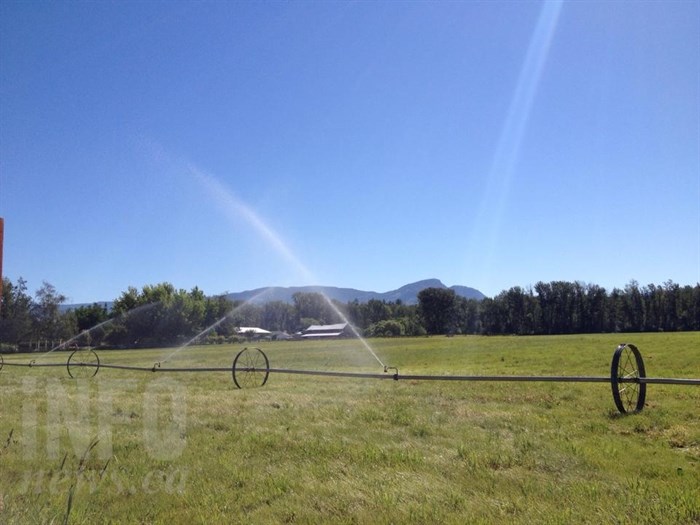
Image Credit: FILE PHOTO
August 18, 2017 - 3:09 PM
It's been months since the Southern Interior received any significant rainfall, and now the provincial government is asking residents to conserve water as much as possible.
In a news release, the Ministry of Forests says streams and rivers in the Middle Fraser, Similkameen, Coldwater, Nicola and Kettle watersheds are experiencing very low flows. These specific areas are experiencing Level 3 drought conditions, which call for voluntary water use reductions of 30 per cent from water users.
The affected areas could experience water supply shortages this year unless there is substantial rainfall, which the Southern Interior hasn't seen since summer began. There has been minor precipitation, but not enough to make an impact.
With more hot, dry weather in the forecast, Thompson-Okanagan residents are also being urged to reduce their water consumption, although the region as a whole is not experiencing Level 3 drought conditions.
Ministry staff are closely monitoring river levels and may upgrade the drought level if weather continues to negatively impact stream flows and water supply, the release states.
Local water conservation bylaws may be different from provincial targets due to local water supply and demand, and the availability of storage or groundwater. All water users in municipalities and regional districts are encourage to follow local water conservation bylaws where they exist.
"While water conservation is the goal, it is recognized that water is needed to extinguish fires," the ministry officials say.
As the situation develops, provincial water managers have the authority to temporarily suspend authorized water usage in affected areas. Level 4 drought conditions are the highest, and are determined by several factors including regional stream flows, water storage capacity, ecological concerns, weather and impacts on water users.
Go here to learn more about the Water Sustainability Act, which helps manage water use.
"Water conservation is everyone's responsibility," officials say. "Many communities in B.C. are prepared to deal with water supply shortages and low streamflow conditions by using drought management plans and water conservation programs that are already in place."
For home water users, the government advises people to limit outdoor watering, avoid watering in the heat of the day or when it's windy, consider planting drought-tolerant vegetation, take shorter showers, don't leave the tap running, and install water-efficient showerheads and toilets.
For farmers, implement an irrigation scheduling program using real-time weather data, schedule irrigation to match crop needs and soil storage capacity, improve water system efficiencies and check for leaks, and focus on high value crops and livestock.
For industry workers, reduce non-essential water usage, recycle water used in industrial operations, and use water-efficient methods and equipment.
Learn more information about droughts here.
— This story was corrected at 10:06 a.m. Wednesday, Aug. 23, 2017 to clarify information provided from the Province of B.C. The Thompson-Okanagan does not have Level 3 drought conditios, just the specific watersheds within the region.
To contact a reporter for this story, email Ashley Legassic or call 250-319-7494 or email the editor. You can also submit photos, videos or news tips to the newsroom and be entered to win a monthly prize draw.
We welcome your comments and opinions on our stories but play nice. We won't censor or delete comments unless they contain off-topic statements or links, unnecessary vulgarity, false facts, spam or obviously fake profiles. If you have any concerns about what you see in comments, email the editor in the link above.
News from © iNFOnews, 2017